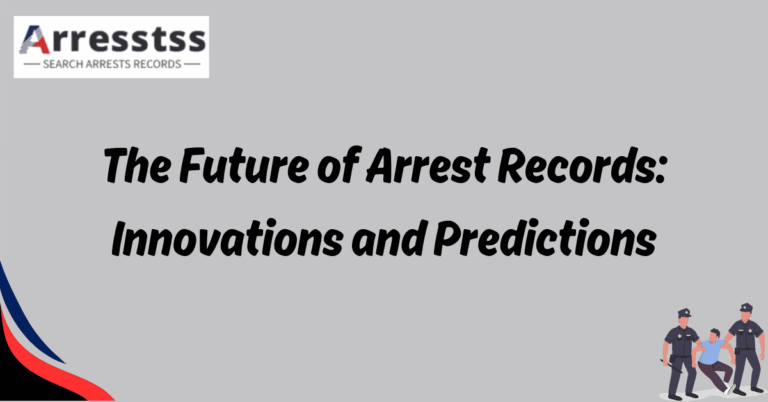Emerging Technologies in Mugshot Processing
Advancements in Facial Recognition Software
Facial recognition software is one of the key emerging technologies revolutionizing the field of mugshot processing. This software utilizes complex algorithms to analyze facial features captured in a mugshot and match them against a database of known individuals. The accuracy and speed of this technology have proven to be a game-changer in solving crimes and identifying suspects.
One of the major advantages of facial recognition software is its ability to quickly and accurately identify individuals even in large databases. This technology can analyze thousands of facial features and match them with potential suspects, significantly reducing the time and effort required by law enforcement agencies. By automating the identification process, facial recognition software allows investigators to focus their resources on other aspects of the investigation.
Additionally, facial recognition software can overcome challenges such as changes in facial appearance due to weight gain, aging, or disguises. The algorithms used in this software are designed to analyze various facial features, including the distance between the eyes, the shape of the nose, and the contours of the face. This enables law enforcement agencies to accurately identify suspects, even if their appearance has changed significantly over time.
Enhancing Accuracy with 3D Imaging
In addition to facial recognition software, 3D imaging is another emerging technology that is transforming the field of mugshot processing. By capturing a mugshot in three dimensions, law enforcement agencies can gather more accurate information about a suspect’s facial structure, enhancing the accuracy of facial recognition.
3D imaging technology allows for a more comprehensive analysis of facial features, including depth and proportions. This additional information enables investigators to better match a suspect’s facial features to those in a database, increasing the reliability of identification. Furthermore, 3D imaging can help overcome challenges posed by changes in facial appearance, ensuring accurate identification even in cases of weight gain, aging, or disguises.
Uncovering Insights with Machine Learning Algorithms
Machine learning algorithms are another powerful tool being explored in the field of mugshot processing. These algorithms can analyze vast amounts of data to identify patterns, trends, and correlations that may not be immediately apparent to human investigators.
By utilizing machine learning algorithms, law enforcement agencies can uncover valuable insights that can aid in the identification of suspects. These algorithms can analyze data from various sources, including criminal records, social media profiles, and other databases, to identify potential connections and associations. This can help investigators identify suspects who may have otherwise gone unnoticed, leading to more effective and efficient investigations.
The Future of Mugshot Processing
The field of mugshot processing is continuously evolving, and emerging technologies such as facial recognition software, 3D imaging, and machine learning algorithms are driving this transformation. These advancements are enhancing the accuracy, efficiency, and effectiveness of investigations, ultimately leading to safer communities.
As technology continues to advance, new tools and techniques will likely be developed to further improve mugshot processing. Law enforcement agencies will continue to explore innovative solutions that can streamline the identification process and provide investigators with valuable insights. By embracing these emerging technologies, law enforcement agencies can stay at the forefront of criminal investigations and ensure justice is served.
FAQ’s
What is mugshot processing?
Mugshot processing refers to the digital capture and analysis of facial images, typically taken after an individual is arrested or detained. It involves the collection and storage of mugshots in law enforcement databases for identification and investigative purposes.
Traditionally, mugshots were captured using 2D photography, but with the advent of emerging technologies, such as facial recognition software and 3D imaging, the process has become more advanced and accurate.
Modern mugshot processing techniques aim to capture facial features and details in a way that enables efficient identification and analysis, aiding law enforcement agencies in solving crimes and ensuring public safety.
Facial recognition software uses complex algorithms to analyze the unique features and patterns of an individual’s face captured in a mugshot. This software compares the facial data to a database of known individuals, searching for potential matches.
By utilizing advanced machine learning techniques, facial recognition software can identify and match faces with a high degree of accuracy, even when faced with variations in lighting conditions, facial expressions, or changes in appearance over time.
This technology has revolutionized mugshot processing by enabling law enforcement agencies to quickly and accurately identify suspects, link them to previous criminal activities, and aid in investigations.
What is the role of 3D imaging in mugshot processing?
3D imaging technology allows for the capture of mugshots in three dimensions, providing a more detailed and accurate representation of a suspect’s facial structure. This technology overcomes limitations associated with 2D photography, such as distortions caused by perspective or changes in facial appearance.
With 3D imaging, law enforcement agencies can gather precise information about a suspect’s facial features, including depth, contours, and proportions. This data enhances the accuracy of facial recognition algorithms, making it easier to identify individuals and reducing the chances of false positives or negatives.
By incorporating 3D imaging into mugshot processing, law enforcement agencies can generate more reliable evidence and improve the overall effectiveness of investigations.
Machine learning algorithms play a crucial role in mugshot processing by analyzing vast amounts of data and identifying patterns, trends, and correlations that may not be immediately apparent to human investigators.
These algorithms can process and analyze information from multiple sources, including mugshots, criminal records, social media profiles, and other relevant data. By doing so, they can assist law enforcement agencies in identifying potential suspects, linking criminal activities, and generating leads.
Machine learning algorithms have the potential to uncover valuable insights and aid in the identification of suspects who may have otherwise gone unnoticed. Their ability to handle large datasets and detect subtle relationships has significantly enhanced the efficiency and effectiveness of mugshot processing in modern law enforcement.







